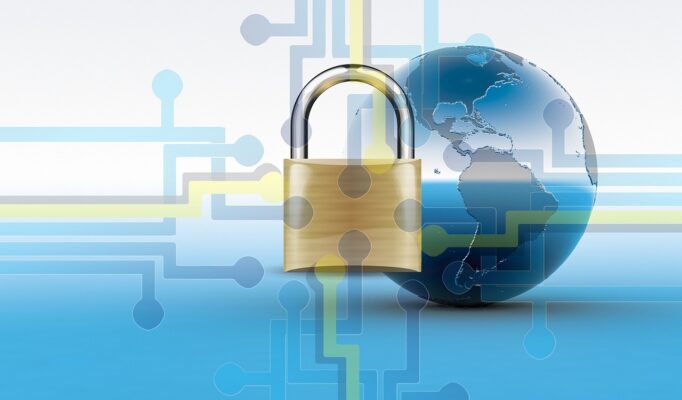Cybersecurity and Personal Data Protection: Safeguarding the Digital Age
In an increasingly digital world, cybersecurity and personal data protection have become paramount concerns for individuals and organizations alike. As technology evolves and cyber threats become more sophisticated, ensuring the security and privacy of personal data is critical to maintaining trust and safeguarding against potential breaches. This article explores the importance of cybersecurity and personal data protection, key challenges, and strategies for mitigating risks.
1. Understanding Cybersecurity and Personal Data Protection
Cybersecurity refers to the practice of protecting systems, networks, and data from digital attacks, unauthorized access, and damage. It encompasses a range of measures and technologies designed to secure information and maintain the integrity, confidentiality, and availability of data.
Personal Data Protection involves safeguarding individual information from misuse, unauthorized access, and breaches. This includes ensuring that personal data is collected, stored, and processed in compliance with relevant privacy laws and regulations.
Key aspects of cybersecurity and data protection include:
- Confidentiality: Ensuring that sensitive information is accessible only to authorized individuals.
- Integrity: Protecting data from being altered or tampered with by unauthorized parties.
- Availability: Ensuring that data and systems are accessible and functional when needed.
2. Key Cybersecurity Threats and Challenges
Several threats and challenges impact cybersecurity and personal data protection:
- Phishing Attacks: Phishing is a common cyberattack method where attackers attempt to trick individuals into providing sensitive information, such as passwords or credit card details, by masquerading as legitimate entities. Phishing attacks often occur through email, social media, or fake websites.
- Malware: Malware, including viruses, worms, and ransomware, is malicious software designed to damage or gain unauthorized access to systems and data. Ransomware attacks, in particular, encrypt data and demand a ransom for its release, causing significant disruption.
- Data Breaches: Data breaches occur when unauthorized individuals gain access to sensitive information, often resulting in the exposure of personal data. Breaches can occur due to weak security measures, human error, or sophisticated cyberattacks.
- Insider Threats: Insider threats involve individuals within an organization who misuse their access to data for malicious purposes or inadvertently cause security breaches. This can include employees, contractors, or other trusted individuals.
- Weak Passwords and Authentication: Weak or compromised passwords are a common vulnerability that can lead to unauthorized access to accounts and systems. Inadequate authentication methods further exacerbate this risk.
3. Strategies for Cybersecurity and Data Protection
To effectively address cybersecurity and personal data protection challenges, organizations and individuals should implement a range of strategies:
- Implement Strong Passwords and Multi-Factor Authentication: Use complex passwords and change them regularly. Implement multi-factor authentication (MFA) to add an extra layer of security, requiring additional verification beyond just a password.
- Regularly Update Software and Systems: Keep operating systems, software, and applications up-to-date with the latest security patches and updates. Regular updates help protect against known vulnerabilities and emerging threats.
- Educate and Train Employees: Conduct regular training and awareness programs for employees to recognize and respond to potential cyber threats, such as phishing attacks. Empowering individuals with knowledge can significantly reduce the risk of security breaches.
- Use Encryption: Encrypt sensitive data both in transit and at rest to protect it from unauthorized access. Encryption ensures that even if data is intercepted or accessed, it remains unreadable without the appropriate decryption key.
- Implement Robust Access Controls: Restrict access to sensitive data and systems based on the principle of least privilege. Ensure that only authorized individuals have access to specific information and resources.
- Regular Backups: Perform regular backups of critical data and store them securely. In the event of a data breach or ransomware attack, having up-to-date backups ensures that data can be restored and business continuity maintained.
- Monitor and Respond to Security Incidents: Establish a security monitoring system to detect and respond to potential threats in real-time. Develop an incident response plan to address and mitigate the impact of security breaches.
4. Regulatory and Legal Considerations
Adhering to data protection regulations and laws is essential for ensuring compliance and avoiding legal consequences. Key regulations include:
- General Data Protection Regulation (GDPR): The GDPR is a comprehensive data protection regulation in the European Union that sets guidelines for the collection and processing of personal data. It emphasizes the rights of individuals and imposes strict requirements on organizations handling personal data.
- California Consumer Privacy Act (CCPA): The CCPA provides privacy rights to California residents, including the right to access, delete, and opt out of the sale of personal information. Organizations must comply with CCPA requirements if they handle data of California residents.
- Health Insurance Portability and Accountability Act (HIPAA): HIPAA regulates the protection of health information in the United States, ensuring that healthcare providers and organizations safeguard patient data and maintain confidentiality.
5. The Future of Cybersecurity and Data Protection
As technology continues to advance, the landscape of cybersecurity and data protection will evolve. Emerging technologies such as artificial intelligence (AI) and machine learning are being leveraged to enhance threat detection and response capabilities. However, these advancements also present new challenges, including the need for secure AI systems and the potential for adversarial attacks.
The growing importance of data privacy and security underscores the need for ongoing vigilance and adaptation. Organizations and individuals must stay informed about emerging threats and best practices to protect personal data and maintain cybersecurity.
In conclusion, cybersecurity and personal data protection are critical in the digital age, requiring a proactive and comprehensive approach to safeguard information and maintain trust. By implementing robust security measures, staying informed about regulatory requirements, and addressing emerging threats, we can navigate the complexities of the digital world and protect our valuable data.



